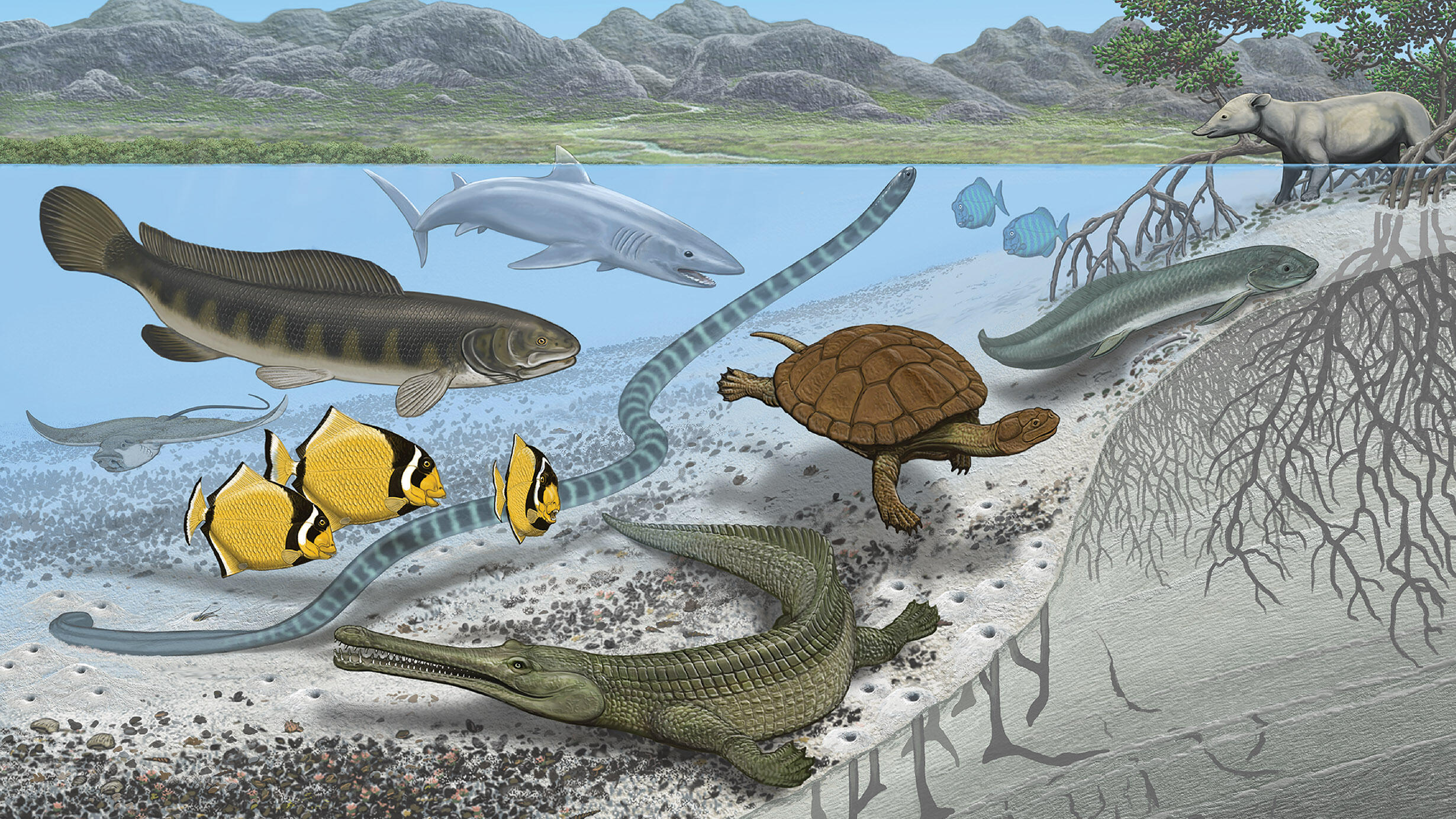 During the Late Cretaceous–early Paleogene, the shallow waters of the Trans-Saharan Seaway waters were teeming with aquatic species which ranged from small mollusks to giant sea snakes and catfish.
During the Late Cretaceous–early Paleogene, the shallow waters of the Trans-Saharan Seaway waters were teeming with aquatic species which ranged from small mollusks to giant sea snakes and catfish.© Carl Buell
The Sahara Desert is the world’s largest hot desert, but 50 to 100 million years ago it was under water—and home to giant species of catfish, sea snakes, and fishes.
A new study from Museum Research Associate Maureen O’Leary, professor of Anatomical Sciences at the Renaissance School of Medicine at Stony Brook University, and colleagues from the U.S., Australia, and Mali that was published in the Bulletin of the American Museum of Natural History last week incorporates findings from 20 years of field research in the Sahara Desert to provide the first reconstructions of some of these extinct species.
The geological and fossil record of West Africa shows that the region was once crossed by a saltwater body, at a time when sea levels were high in the aftermath of the breakup of the supercontinent Gondwana during the late Mesozoic Era. In fact, 40 percent of current land was under water—including areas that are now arid deserts.
© AMNH/S. Thurston
The warm, shallow waters of the Trans-Saharan Seaway, as the body of water that reached into the region of the current Sahara Desert, were home to numerous ancient vertebrates, invertebrate, plant, and microbial species. The new study offers theories for why some Sahara Seaway species reached extreme sizes.
“Fossils found on the expeditions indicate that the sea supported some of the largest sea snakes and catfish that ever lived, extinct fishes that were giants compared to their modern-day relatives, mollusk-crushing fishes, tropical invertebrates, long-snouted crocodilians, early mammals, and mangrove forests,” said O’Leary. “Because the seaway changed in size and geography frequently, we propose that it may have resulted in ‘islands of water’ that stimulated species gigantism.”
Luci Betti-Nash
The research team, which includes Museum Research Associate Jocelyn Sessa of Drexel University, also fossil evidence of sharks, turtles, and a small, land mammal that is an ancient elephant relative, uncovered under difficult conditions in field expeditions in 1999, 2003, and 2009.
“I was amazed by the quality and diversity of marine fossils we found in the Sahara Desert,” said study co-author Leif Tapanila, professor of Geosciences at Idaho State University. “Few paleontologists had worked the region, given its remoteness and scorching 125-degree Fahrenheit temperatures.”
The geological and fossil record of West Africa shows that the region was once crossed by a saltwater body, at a time when sea levels were high in the aftermath of the breakup of the supercontinent Gondwana during the late Mesozoic Era. In fact, 40 percent of current land was under water—including areas that are now arid deserts.